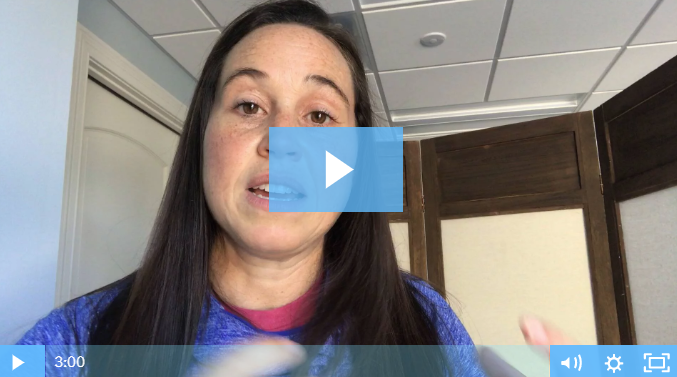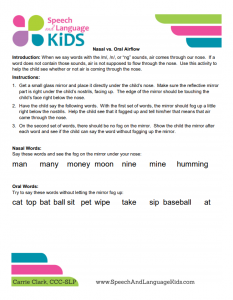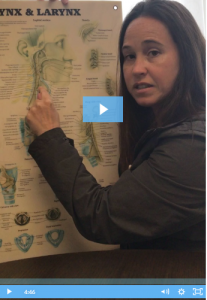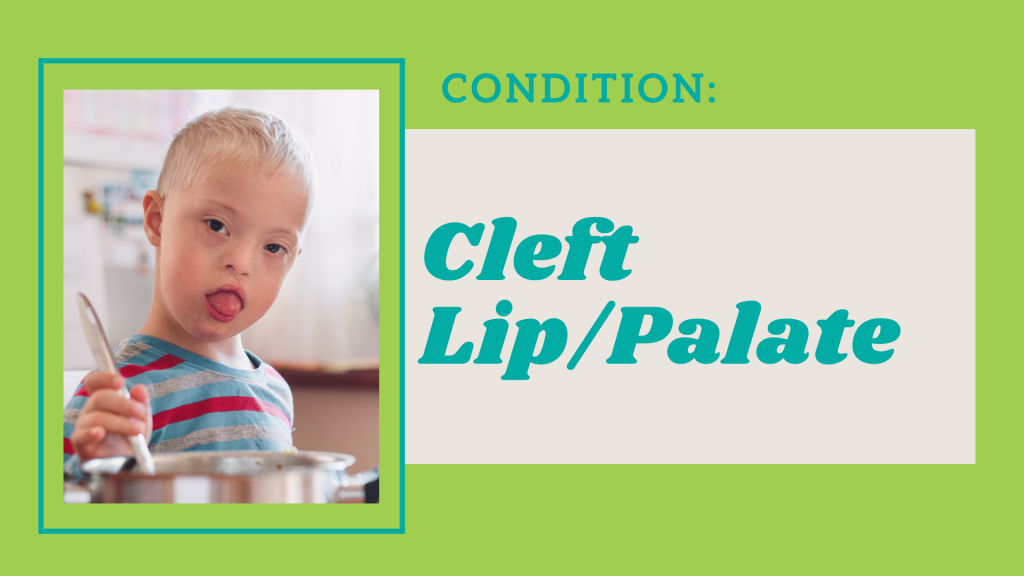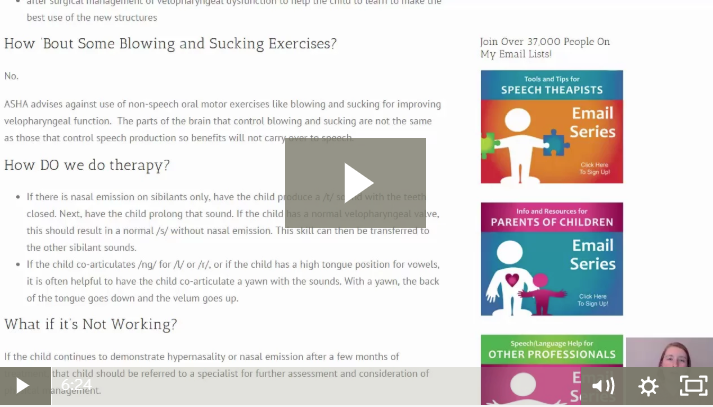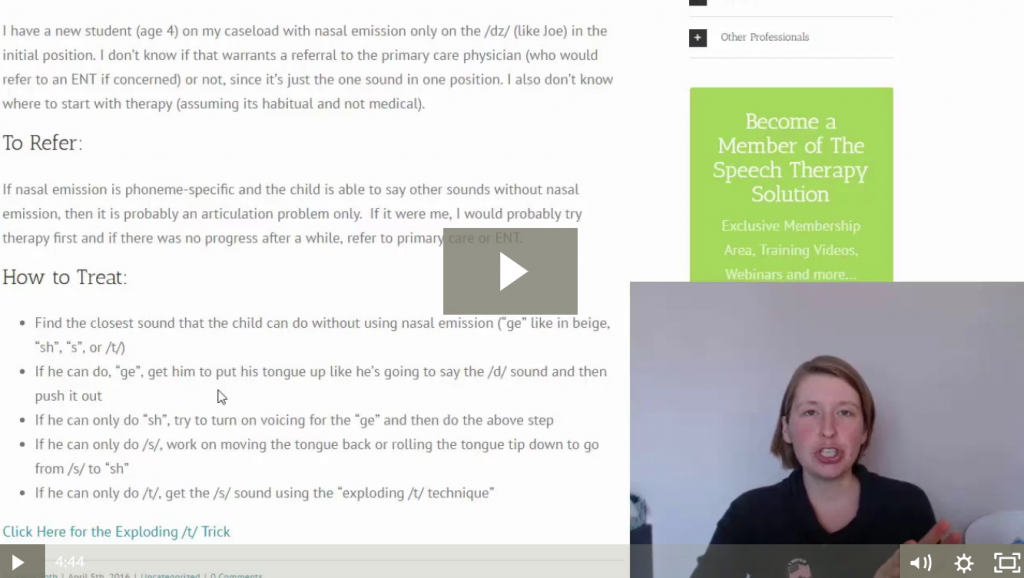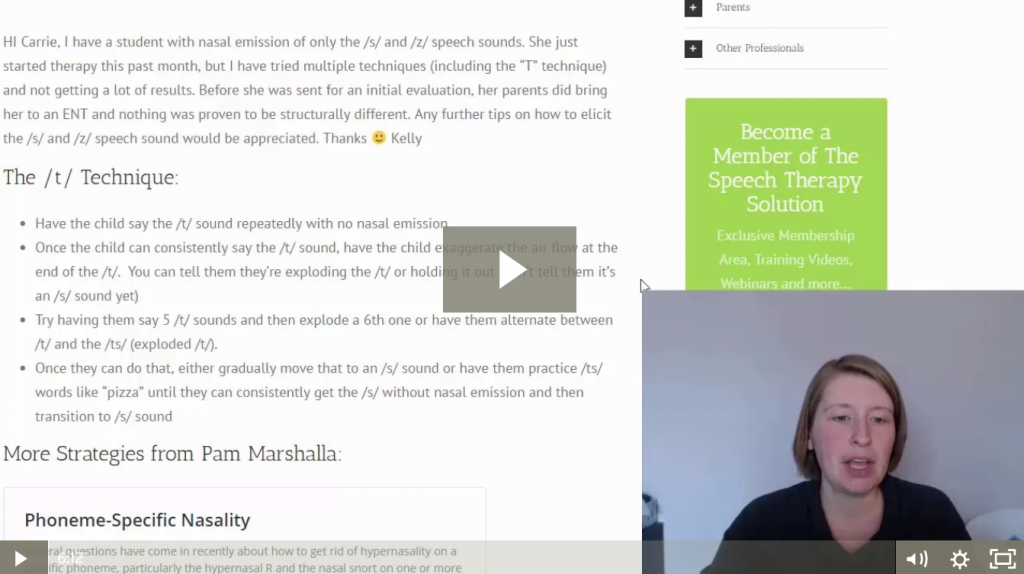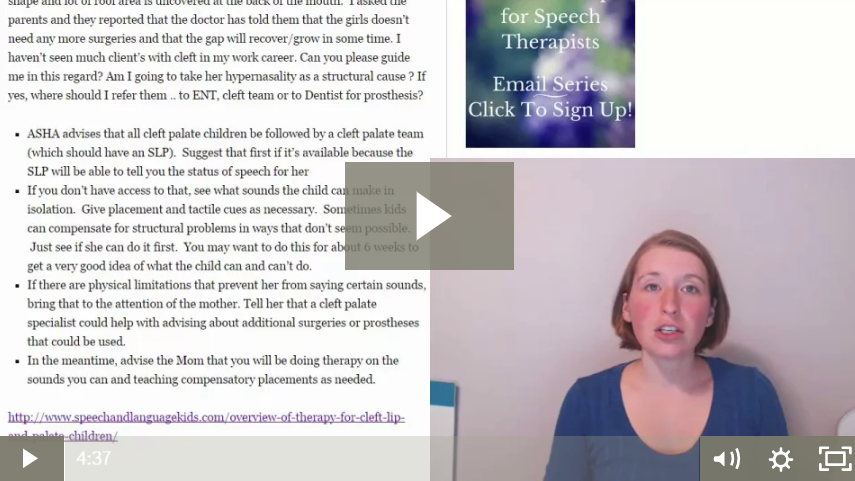Condition: Resonance/Nasality Issues
Jump To:
Norms by Age Evaluation Suggested Goals Therapy
Definition:
From the American Speech-Language Hearing Association:
Speech resonance is the result of the transfer of sound produced by the vocal folds through the vocal tract comprised of the pharynx, oral cavity, and nasal cavity (Kummer, 2020a; Peterson-Falzone, Trost-Cardamone, Karnell, & Hardin-Jones, 2017). The vocal tract filters this sound, selectively enhancing harmonics based on the size and/or shape of the vocal tract. Perceived resonance is the result of this filtered tone.
Normal resonance is achieved through an appropriate balance of oral and nasal sound energy, based on the intended speech sound. Resonance varies for vowels, oral consonants, and nasal consonants and also varies across languages and dialects. Most vowels and vocalic consonants in the English language are predominantly oral. Normal resonance has a range of acceptability and is perceived along a continuum (Peterson-Falzone, Hardin-Jones, & Karnell, 2010).
Resonance disorders result from too much or too little nasal and/or oral sound energy in the speech signal. They can result from structural or functional (e.g., neurogenic) causes and occasionally are due to mislearning (e.g., articulation errors that can lead to the perception of a resonance disorder).
Resonance is a function of sound—not airflow. Resonance disorders should not be confused with nasal airflow “errors” or distortions. Nasal airflow “errors” are related to articulation when there is an inappropriate escape of air through the nasal cavity during production of pressure consonants. Nasal airflow “errors” may be learned (e.g., nasal fricatives, pharyngeal fricatives, and phoneme-specific nasal emission), or they may be obligatory due to a palatal fistula or VPD. See ASHA’s Practice Portal Page on Cleft Lip and Palate for further discussion.
Resonance disorders include the following:
- Hypernasality—occurs when there is sound energy in the nasal cavity during production of voiced, oral sounds.
- Hyponasality—occurs when there is not enough nasal resonance on nasal sounds due to a blockage in the nasopharynx or nasal cavity.
- Cul-de-sac resonance—occurs when sound resonates in a cavity (oral, nasal, or pharyngeal) but is “trapped” and cannot exit because of an obstruction.
- Mixed resonance—presence of hypernasality, hyponasality, and/or cul-de-sac resonance in the same speech signal.
Developmental Norms:
Issues with resonance and nasality are not generally found in typically-developing children. Young babies (younger than 9 mos) vocalize primarily using quasi-resonant nuclei, which are vowel-like sounds with normal phonation but with limited resonance. However, around 9 months of age, those vocalizations become fully resonant and the child begins vocalizing using more vowel sounds. After nine months of age, that resonance becomes mastered and any further resonance or nasality issues should be further investigated.
Source:
Nathani, S., Ertmer, D. J., & Stark, R. E. (2006). Assessing vocal development in infants and toddlers. Clinical linguistics & phonetics, 20(5), 351–369. https://doi.org/10.1080/02699200500211451
Evaluation:
Guidance from the American Speech-Language Hearing Association on assessment for resonance disorders:
Consistent with the World Health Organization’s (WHO) International Classification of Functioning, Disability and Health (ICF) framework (ASHA, 2016a; WHO, 2001), assessment is conducted to identify and describe
- impairments in body structure and function, including underlying strengths and weaknesses related to resonance factors that affect communication performance;
- co-morbid deficits or conditions, such as developmental disabilities, syndromes, neuromuscular diseases, or hearing loss;
- limitations in activity and participation, including functional communication in everyday communication contexts (see, e.g., Skirko et al., 2013);
- contextual (environmental and personal) factors that serve as barriers to or facilitators of successful communication and life participation; and
- the impact of communication impairments on quality of life of the individual and family.
Source:
https://www.asha.org/PRPSpecificTopic.aspx?folderid=8589943934§ion=Assessment
Suggested Goals:
The results of the assessment process should help guide what you will target in therapy for a child with feeding and/or swallowing disorders. Here are some goals that you may be addressing with this population. You can click on one of the goals below to learn more. Or, scroll down to the therapy section for more in-depth resources and support for treating this condition.
Therapy:
Start at the ENT:
Therapy for resonance/nasality issues should always begin with a referral to an Ear Nose Throat (ENT) doctor who can evaluate the physical structures and provide clearance for speech therapy to begin. Some clients will require surgical or prosthetic management before speech therapy can begin.
What We Can Target:
According to the American Speech-Language Hearing Association, behavioral speech therapy can target the following resonance/nasality issues once medical clearance has been obtained:
- Phoneme-specific nasal air emission (PSNE) or phoneme-specific hypernasality with normal VP function
- Compensatory misarticulations that are still present after structure has been corrected (common in patients with a history of cleft palate)
- Articulation errors secondary to apraxia of speech (work on planning/coordination of VP movement)
- Postoperative hypernasality or nasal emission
- Muscle weakness/dysarthria resulting in hypernasality
Source: https://www.asha.org/PRPSpecificTopic.aspx?folderid=8589943934§ion=Treatment
Additional Resources for Treatment of Resonance/Nasality Issues:
How to Teach Frontal Focus Resonance Instead of Laryngeal Resonance
This resonance strategy is helpful for clients who are using laryngeal tension or glottal fry instead of achieving proper resonance in the front of the face. Can be helpful for achieving normal nasal resonance as well.
Nasal vs. Oral Airflow Activity (with Mirror)
This one-page activity will walk you through using a mirror to determine if the client is using oral or nasal airflow.
Client Education about the Voice/Speech Mechanism
Laura walks you through how she educates clients about how their voice works.
Goal: Reduce Hypernasality and/or Nasal Emissions
Materials and therapy ideas for reducing hypernasality in speech.
Condition: Cleft Lip and/or Palate
Resources and materials for clients who have repaired (or un-repaired) cleft lip/palate.
Training video with ideas for what to work on if a client has nasal emission on all or many sounds.
Phoneme-Specific Nasal Emission on the “j” Sound
Quick training video on how to help with phoneme-specific nasal emission on “j”.
Phoneme-Specific Nasal Emission on the /s/ and /z/ Sounds
Quick training video on how to help with phoneme-specific nasal emission on /s/ and /z/.
What to Target When the Palate is Not Fully Repaired
Ideas for what to do if you’re working with a client with a palate that still requires surgical intervention and hasn’t been fully repaired yet.
Didn’t Find What You’re Looking For?
We’re constantly working on adding new features and topics to this membership site. If you don’t find what you’re looking for by using the search bar at the top of the page, please use the button below to request new features or topics to be added!

